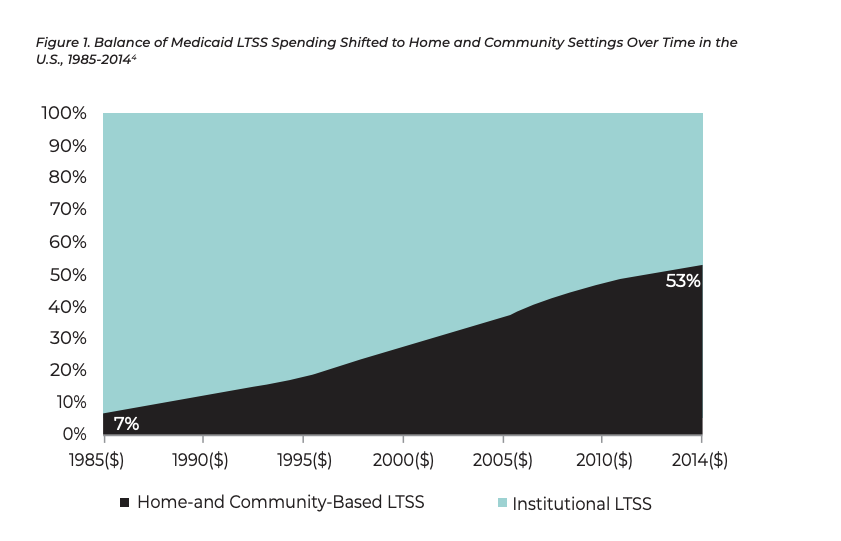
Federal regulators and policy makers have increasingly coaxed long-term care patients and services to migrate more to home- and community-based settings in recent years.
Now it’s time to allow long-term care pharmacists to do the same, without barriers that have been imposed by lawmakers for years, according to new study findings from the Senior Care Pharmacy Coalition (SCPC) and healthcare analysis firm ATI Advisory.
Their report, “The role of long term care pharmacy in supporting individuals with long-term services and supports needs,” was officially released Tuesday (July 25).
“LTC pharmacy is rarely provided at home due to longstanding policy and operational barriers,” despite the recent overall shift away from institutional care settings, report authors said.

Expanding access to LTC services for people aging in place is vital, stressed Alan Rosenbloom, the president and CEO of SCPC.
“Long-term care pharmacies play an essential role in communities across the US, particularly as more of our population ages,” Rosenbloom said in a statement. “This report underscores the important opportunity for Congress to remove barriers and allow LTC pharmacies to improve outcomes and reduce the cost of care for seniors and individuals with disabilities, not just in institutional care but in home- and community-based settings, as well.”
Those barriers include a mandate from the Medicare Part D prescription drug program that medication plans contracted through LTC pharmacies only be available to patients in facilities, such as nursing homes, per the federal definition, the study explains.
Because home- and community-based services are not included in the definition, LTC pharmacists cannot be reimbursed for serving those patients. This has shifted even more burdens on home-care caregivers, who must be responsible for managing their patients’ medication needs all on their own.
In-home caregivers are often friends or relatives, many of whom assist without pay. A 2022 report found that there were about 53 million unpaid caregivers in the United States who provide over $470 billion worth of caregiving services in total each year.
In contrast, nursing facility residents and other institutional settings typically have a variety of aides, licensed and registered nurses, physicians and personal care staff who can assist with medication management.
The ATI report noted that LTC pharmacists services in the community can include many of their institutional counterparts’ offerings, such as dose-specific packaging, round-the-clock delivery and medication utilization review. They also may include patient and family caregiver education and adaptations to individual living environments.
The researchers reported that a typical community-dwelling patient, living with serious impairments and multiple chronic conditions, is prescribed eight or more prescriptions at a time by more than five different prescribers.
“As a result, the LTC pharmacies frequently identify contraindicated medications among their patients,” researchers explained. “To address potential adverse outcomes, the LTC pharmacies design and conduct medication therapy management (MTM) specifically around frequent transitions of care and drug regimen changes.”
Researchers outlined three successful HCBS setting benefiting from full LTC pharmacy services. It would be ill-advised to leave these pharmacy services out of more individuals’ care routines, report authors intimated.
“This research illustrates the risks of unmet pharmacy needs among the community-dwelling population experiencing LTC needs, as well as the opportunity to improve care outcomes through innovative service models similar to the LTC pharmacy providers profiled in this brief,” they said.



